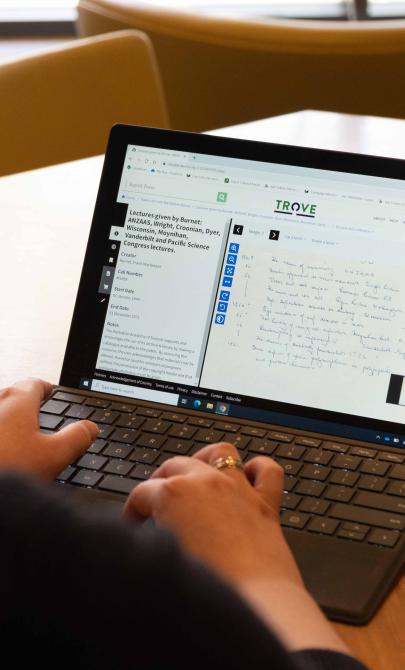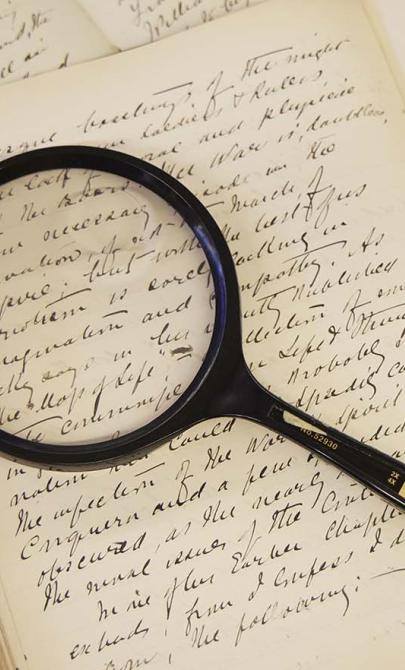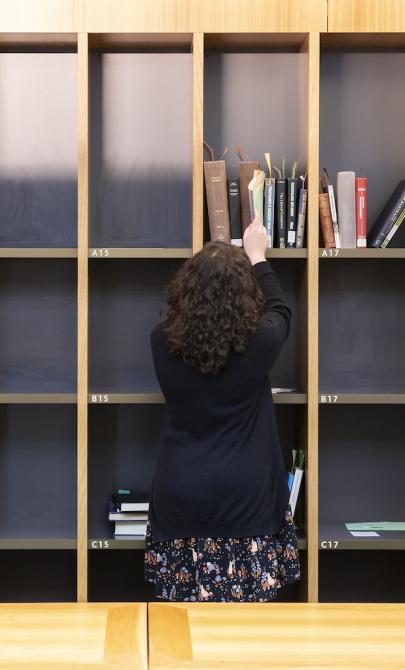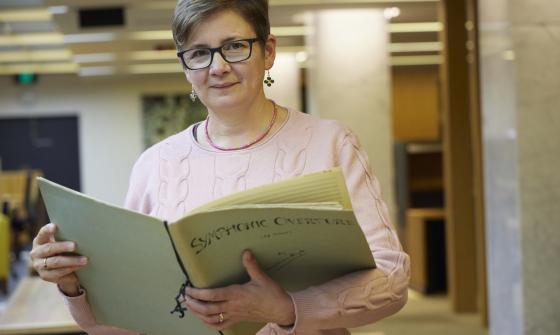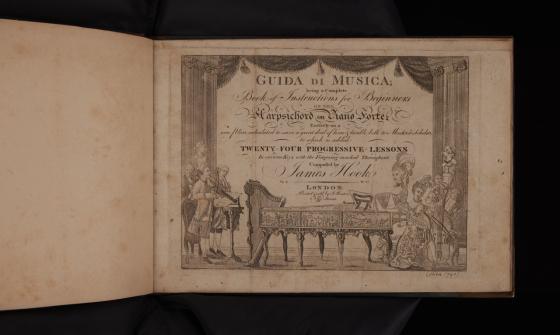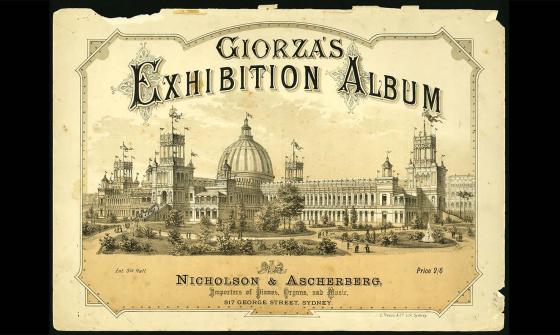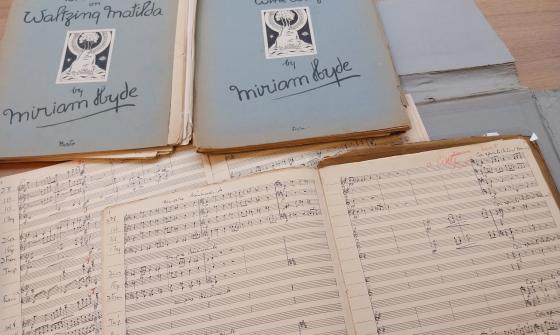Sculthorpe Collection
Key items in the collection
Highlights from this collection demonstrate its historical significance and variety.
The Sculthorpe Collection is one of the most comprehensive archives of an Australian composer, rivaled only by the Percy Grainger Collection. Peter Sculthorpe, a natural archivist, meticulously retained and organised his manuscripts and papers, with a logical filing system.
The collection spans Sculthorpe's creative life, with the earliest music manuscripts dating to 1941 (when he was 12) and correspondence from the 1950s onwards. It is organised into a broad range of series, showcasing the depth and variety of his work.
Correspondence
- ‘In’ (1957–90) and ‘Out’ (1985–90)
- With Faber Music (1960–2001)
- With other composers, writers, and artists
- Family correspondence (1950s–2001)
Creative materials
- Manuscript scores (1941–2001)
- Writings by Sculthorpe on his works
- Other writings by Sculthorpe
Personal and professional documentation:
- Diaries and notebooks (1950–81)
- Awards (1970–2001)
- Special occasions (1967–2002)
- Financial records.
- General office papers and subject files (1963–2001)
Media and press:
- Photographs.
- Press cuttings (1945–94)
- Journals and magazines containing writings by or about Sculthorpe
Special categories:
- Musical works dedicated to Sculthorpe (1976–2001)
- Personal treasures
- Miscellaneous
Manuscript Scores
The collection includes over 300 manuscript scores and sketches, ranging from:
Early works:
- Adagio in Major Keys (1941–42)
Major compositions:
- Irkanda series (1955–61)
- Sun Music series (1965–69)
- Port Essington (1977)
- Manganinnie (1980)
- Earth Cry (1986)
- Kakadu (1988)
- Quamby (2000)
Most manuscripts are fair copies, as Sculthorpe enjoyed producing polished versions of his work.
Literary Manuscripts
Sculthorpe's literary manuscripts reflect his diverse interests, including essays, articles, and lectures on topics such as:
- Aboriginal music
- Asian and Indonesian influences on Australian music
- Japanese poetry and the koto
- Jazz, rock, and electronic music
- Major composers: Alban Berg, Béla Bartók, Benjamin Britten, and others
He also wrote poems as a young man, providing insight into his creative evolution
Correspondence
Family letters:
- Letters kept by Edna Sculthorpe, covering Sculthorpe’s early years in Sydney, England, and the United States.
Professional correspondence:
- With Faber Music over 35 years, documenting the publication and recording of his works.
- With notable musicians, writers, and artists, including:
- Don Banks, Anne Boyd, Russell Drysdale, Patrick White, and Roger Woodward.
- With musical groups such as the Brodsky Quartet and Kronos Quartet.
Significance
The Sculthorpe Collection offers unparalleled insight into the life, work, and influences of one of Australia's most celebrated composers. Its rich documentation of his compositions, collaborations, and reflections provides a treasure trove for researchers and music enthusiasts alike.
The Sculthorpe Collection includes a range of portraits and artworks by renowned Australian artists, as well as works inspired by Sculthorpe’s music. It also features Sculthorpe’s own creative illustrations, offering a multidimensional view of his artistic legacy.
- Judy Cassab: Oil portrait (1988) and Lithograph (1984)
- Eric Smith: Oil portrait (1982)
- Greg Hocking: Ink drawing (1966)
- Ted Binder: Pencil drawing and Acrylic painting (1978)
- Maisie Drysdale: Charcoal drawing
- Alan McIntyre: Watercolour (1951)
- Elizabeth Parrott: Charcoal drawing (1972)
- Graham Bryce: Ink drawing (1979)
- June Mendoza: Charcoal drawing (1966)
- Les Tanner: Ink drawing
Artworks Inspired by Sculthorpe’s Music
Sculthorpe’s compositions have served as inspiration for visual artists, including:
Russell Drysdale:
- A watercolour and six drawings based on Port Essington (1979–80)
- Five watercolours inscribed to Sculthorpe (1975–79)
- A series of five pencil drawings titled The Five Ages of Peter Sculthorpe (1966)
John Coburn:
- Sun Music (1989), painted for Sculthorpe’s 60th birthday.
Kenneth Rowell:
- Two watercolour studies for the Sun Music ballet (1968).
Sculthorpe’s Own Illustrations
The collection includes about 50 pen-and-ink and watercolour drawings and cartoons created by Sculthorpe himself, primarily between 1941 and 1943.
- These works were intended to illustrate a children’s book, which was never completed.
- They reveal a whimsical and imaginative side of Sculthorpe’s creativity, distinct from his musical accomplishments.
Significance
The artistic works in the collection highlight the profound influence of Peter Sculthorpe’s music on Australia’s cultural landscape and his relationships with leading visual artists. His own illustrations add a personal and unexpected dimension to his artistic legacy.
There are about 150 photographic portraits and 1500 other photographs of Sculthorpe, his family, friends and musical groups. They extend from his childhood and school days to the 1990s.
The collection includes 83 books about Sculthorpe or referencing him, around 150 journal issues with articles on his life and music, teaching kits, several theses, and 20 posters promoting performances of his work.
The collection features 37 reel-to-reel tapes, 77 commercially produced CDs, 85 cassette tapes, and 41 commercially produced 33 rpm records of performances of Sculthorpe’s works. It also includes 16 videos of films featuring his music and television interviews.
About Peter Sculthorpe
Early life and education
Peter Sculthorpe (1929–2014) was born in Launceston, Tasmania, and developed a passion for music from a young age. Educated at Launceston Grammar School and the University of Melbourne, he started composing as a boy, earning awards for his early work. After graduating, he returned to Tasmania, where he managed a sporting goods shop with his brother while composing many short pieces. His 1954 Sonata for Solo Piano marked the beginning of his mature style and gained international attention at the International Society for Contemporary Music Festival in Germany in 1955. Sculthorpe later studied at Oxford University (1958–1960), where he connected with prominent composers and honed his craft. In 1963, he began a long academic career at the University of Sydney, influencing generations of Australian composers.
Musical achievements and influence
Sculthorpe composed across many genres, including orchestral works, chamber music, choral pieces, and music for film, theatre, and ballet. His Sun Music series (1965–1969) brought him widespread acclaim, with several pieces choreographed by Robert Helpmann for the Australian Ballet. Known for evoking Australian landscapes and themes, works like Mangrove (1979) and Kakadu (1988) cemented his reputation both locally and internationally. Sculthorpe’s teaching shaped the careers of influential composers such as Anne Boyd, Barry Conyngham, and Ross Edwards, leaving a lasting legacy in contemporary Australian music.
Recognition and legacy
Sculthorpe received numerous honours for his contributions to music. He was made an Officer of the British Empire (OBE) in 1977 and an Officer of the Order of Australia (AO) in 1990. In 1997, the National Trust named him an Australian Living National Treasure, celebrating his impact on Australian culture and music.
Background to the collection
The collection, purchased from Sculthorpe in 2002, includes music and literary manuscripts, personal papers, photographs, paintings, drawings, and sound recordings. In 2005, he donated a portrait of himself by Edward Binder under the Cultural Gifts Program, and in 2007, he gifted several music manuscripts.
With the exception of the paintings, drawings and prints, the Sculthorpe Collection has been kept together within the Manuscripts Collection. It occupies 96 boxes and 19 folio boxes. Use the finding aid.
The Pictures Collection hold the paintings and other artworks.
This guide was prepared using these references:
- Gweneth Barnes, Peter Sculthorpe: an Australian composer's influence, Brolga Publishing, Melbourne, 2011.
- Michael Hannon, Peter Sculthorpe: His Music and Ideas, 1929–1979, University of Queensland Press, Brisbane, c. 1982.
- Deborah Hayes, Peter Sculthorpe: A Bio-bibliography, Greenwood Press, Westport, Conn., 1993.
- Peter Sculthorpe, Sun Music: Journeys and Reflections from a Composer’s Life, ABC Books, Sydney, 1999.
- Patricia Shaw, Sculthorpe, Peter Joshua, in Warren Bebbington, The Oxford Companion to Australian Music, Oxford University Press, Melbourne, 1997, pp. 507–9.
- Graeme Skinner, Peter Sculthorpe: The Making of an Australian Composer, University of New South Wales Press, Sydney, 2007.
- Naomi Vear, Collecting a Living National Treasure, National Library of Australia News, vol. 13 (3), December 2002.
